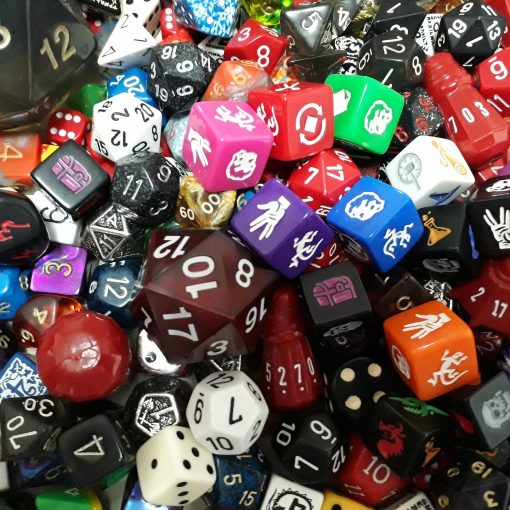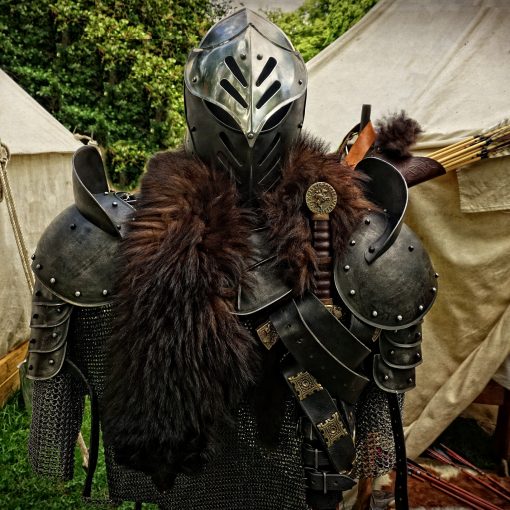One of the things that I’ve struggled with of late is the overwhelming number of useful tools for GMs out there. It’s a good problem to have, but it’s still a problem, because if you just dip shallowly into everything, you’re going to wind up with a mess where you wonder which place you put what. In addition, it seems to me like the best approach is to use a set of different resources rather than trying to make just one do everything for you.
I’m deep in the weeds on this right now with the new campaign (session zero this weekend!) and am trying to get everything into a consistent, usable state. So in an effort to spare other GMs the headaches I’ve been having, here’s a list of several different types of tool and what I ultimately settled on for each and how I’m using them. I know I’ve done posts that were lists of useful tools before, but those were basically listicles. With this, I’d like to go a bit more in-depth and explain how things interlock, and then also get into some specific challenges and experiential notes at the end.
As a side note before we begin: what an amazing golden age we live in for such things. In my living memory, I did all of this with a notebook or word processor document and it was much more tedious and easy to lose.
Cloud Storage
In order to both avoid a single point of failure that can wipe out all of my hard work and give myself an opportunity to work on things while I’m on my lunch break at work, I need some kind of cloud storage. For this, I’ve chosen Google Drive. I have the lowest paid tier of it (which costs me $2 a month) and I’ve synched the folders where I put my campaign stuff to it. The other nice thing about using Google Drive is that it’s got Google Docs and Google Sheets baked in, which is good for working away from my home PC and also making resources that I can share with my players such as the massive spreadsheet of classes and subclasses I’ve made available to pick from. Google Drive is also an excellent place for session notes and the like because of the shareable nature of it.
Cloud storage also provides a useful place to park lists of topics that are off-limits due to your safety tools, custom character materials, and anything else that everyone should be able to get at.
Usage tips: The only reason I’m paying Google for this at all is because I have a bunch of other personal files (so many pictures of our cats) backed up in there and we use Google Drive to move audio files around for the podcast. If I was just using it for game-related storage, the capacity provided for free would be more than sufficient.
Potential Pitfalls: The snag I’ve most commonly run into with this particular resource is not cross-pollinating. I can back my stored files from Scrivener up in Google Drive, but obviously transferring content between two entirely different resources is on me.
Setting Documentation
For this, I’m using two separate tools: World Anvil and Scrivener. World Anvil is specifically designed to be used for setting design. I’ve just got the free membership, but even at that level, it is just a phenomenal tool. In the EULA and terms of service they make it extremely clear that they claim no copyright or other ownership over your content, which is wonderful. World Anvil organizes your world information into articles, which can be linked to one another. It also includes timelines, places to put maps and so on.
Scrivener is essentially a specialized word processor with a bunch of useful organizational tools. It’s a one-time purchase of $45, but you can try it out for free. If you’ve ever thought about writing a book, it’s a solid choice for that – you can do all kinds of useful things to organize and re-order sections of your work. I’ve never fired up a piece of productivity software for the first time with anywhere near the level of excitement I did with Scrivener. One of the nicest things for a GM is the ability to drag your research material straight into the program and split-screen between what your’re writing and either another piece of the work or the research you’ve added.
Usage Tips: Get into the habit of propagating data across your different tools as quickly and as regularly as possible. Most of my headaches right now are coming from the fact that I have some setting info in World Anvil, some in Google Drive (In two different master folders, no less!) and the rest in a Scrivener project.
Potential Pitfalls: I’ve touched on it above – it’s very easy to wind up with a bunch of disorganized and possibly even contradictory setting information spread around to different places. Some of that is unavoidable – you’ll change and develop ideas as you work – but whenever you figure out what the final version of something is, it’s a good idea to get that down as quickly as possible and remove contradictory version or shuffle them off to an archive somewhere.
Map Creation
What’s an RPG setting without maps? Significantly harder to parse, that’s what. While I don’t always do maps for everything (a function of time as much as any other consideration) I do have a couple of solid tools to recommend here, too.
The first is Wonderdraft. This is another commercial product (about $42 for the base program and the one expansion pack it’s got so far) and it’s a solid resource for making maps of large territories. I switched to Wonderdraft after learning about some of the intellectual property entanglements of Inkarnate and have been happier with the program overall.
The second is Dungeon Painter Studio. Dungeon Painter Studio is an encounter map creation tool available on Steam. There’s a decent amount of additional content available for it in the Steam Workshop, and the base program is $15. Programs like this one with both fantasy and sci-fi/modern resources in them are especially nice for me because I like to mix fantasy with other genres.
Usage Tips: Save often and use different filenames. For example, when you get your continent shapes how you want them, save! Save again when you’ve got a section of details looking nice, and again with the next one. If you’re anything like me, it’s going to take a few attempts to get things right, so save and give yourself fallback points.
Potential Pitfalls: This is for a home game. You don’t need a museum-quality piece. Also, give yourself permission to use pre-made maps and theater of the mind. Encounter maps in particular can be a massive time sink.
Adventure Plotting
This is a new one to me, but so far I really like the way it turned out. I picked up a copy of the Articy:Draft for a steal ($2.50 or therabouts) on a bundle site called Fanatical a few months back. It’s essentially a flow charting program on … steroids, which are themselves on their own, separate steroids, which in turn have been cybernetically enhanced and given super-powered mutagens.
It is specifically geared for use in game design, and while it’s fairly obvious that the primary use case in mind is video games, as it turns out, it works great for TTRPG plots, too. The version I picked up at such a deep discount isn’t licensed for commercial use and is also one version older than current, but I really can’t find it in myself to be bothered by either of these things. I’m in kind of a frustrating position with that particular program, though. It’s normally $100, which is significantly more than I can in good conscience recommend people spend on anything that they’re primarily going to use as a GMing tool. However, if you’ve got the funds (or can find an incredible deal like I did) and the inclination, it really is a fantastic program.
Usage Tips: Flowcharts are very nice for more complex adventure planning – you can put a couple of potential likely PC actions and possible reactions to the world down different trees and if you’re using something like Articy, even indicate which NPCs are there and what the location is.
There’s also the possible application of using this approach for setting notes, detailing what the PCs did and how it affects the world. I personally anticipate using the program this way, because I will eventually have two parties loose in the setting and while they’re going to initially be far away from each other, who knows what might happen where one could influence the other in some way?
Potential Pitfalls: In the words of a veritable army of GMs: you’re never going to anticipate everything the PCs will do. If a flow chart is going to make you rigid and inflexible when the time comes to actually run the game, this may not be the best tool for you.
Reference Materials
In addition to the actual gaming books I’ll be using (which will vary from game to game, obviously) I have a couple of general-purpose reference books I’m going to be utilizing.
- Wonderbook by Jeff Vandermeer is the first. It’s primarily for writers, but a lot of the material is good for GMs as well, and it’s a very engaging and thought-provoking volume. Even just the first chapter is incredibly valuable to GMs who are trying to figure out how to wring additional ideas out of their brains.
- The Complete Guide to Creating Epic Campaigns by Guy Sclanders is the other one. As you can tell by the title, this one is specifically geared to GMs and it is chock full of practical advice.
Usage Tips: I like to consume this stuff as a sort of “continuing education” program for me as a GM. It’s always nice to have some expert advice on hand.
Potential Pitfalls: Don’t fall victim to analysis paralysis!
Synthesis
Many of these things feed back into each other. For example, World Anvil has the ability to handle maps and you can (and really should) back any relevant files up in your cloud storage. The trick, I think, is taking the time to get everything matched up and then keeping it that way, propagating new changes across all of your materials as soon as you make them.
One final note: this list of tools represents a number of gifts and also building things up over time. Don’t feel like you need to rush out and snag all the commercial software, but do look at the free stuff like Google Docs and World Anvil.
As always, I’m very interested to hear your thoughts and your process. Do you have a similar list of tools, or do you think I’m a nut for using all of this? Let me know in the comments or on the Discord.
Photo by Cesar Carlevarino Aragon on Unsplash





3 thoughts on “Buried in Tools”
This is really helpful.
I found World Anvil to be…too granular for me. Do you find that you use much of the functionality? Or are there a lot of blank categories in your worldbuilding? In a few cases I had an idea simply because it was a field to fill on World Anvil, but overall it was just too extra for me as a tool.
Glad it’s useful!
Regarding World Anvil, I initially had that reaction to it as well. The thing that changed my mind about it was finding out that any fields you left blank just didn’t appear. So yes, there are a lot of blank categories in almost all of my articles. Maybe even actually all of them – I’d need to check. I definitely didn’t feel the need to think about genotype and phenotype for a monster, for example.
I think the World Anvil folks want to make the site as useful as possible to everyone, but yeah, some of those templates get pretty daunting with all of their fields.
Then again, I learned to play RPGS on GURPS and 3.5 D&D. I’m a little bit of a maniac when it comes to granularity. ;)
GURPS was also an early one for me, along with AD&D 2nd Ed. I’ve just noticed that there is sometimes an inverse relationship between the granularity of my worldbuilding and the actual work I get done writing (and/or the things that actually come up in a story). But I’m glad to know that those empty text boxes don’t just sit there, haunting you :)